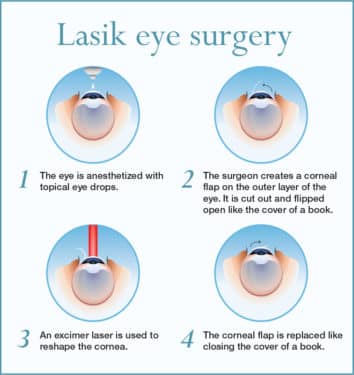Evaluating The Benefits And Drawbacks Of Standard Cataract Surgical Procedure Versus Advanced Laser-Based Approaches
Material Develop By-Carstensen Breen When pondering the option between typical cataract surgery and laser-assisted methods, you may find yourself considering the benefits and drawbacks each technique provides. The decision goes beyond the surface area level of cost and precision, diving right into the realm of long-lasting outcomes and patient complete satisfaction. As you navigate through the intricacies of these two strategies, it becomes vital to understand the nuanced details that can significantly impact your visual quality and general experience. Remain tuned to reveal the vital factors that will lead your decision-making process in this vital element of eye care.
Traditional Cataract Surgical Treatment Pros and Cons
When thinking about conventional cataract surgery, you might locate that it's a reputable and widely-used technique. In this procedure, a doctor makes a little laceration in the eye and makes use of ultrasound to separate the cloudy lens before removing it. As soon as the cataract is removed, a fabricated lens is placed to bring back clear vision. One of the major benefits of standard cataract surgical treatment is its track record of success. Many clients have actually had their vision substantially boosted through this procedure. Additionally, traditional surgery is commonly covered by insurance coverage, making it a much more accessible alternative for numerous people. Nevertheless, there are some drawbacks to traditional cataract surgical procedure also. Healing time can be longer compared to more recent techniques, and there's a slightly higher risk of complications such as infection or inflammation. Some clients might also experience astigmatism or require reading glasses post-surgery.
Laser-Assisted Techniques Pros and Cons
Exploring laser-assisted methods for cataract surgical treatment reveals a contemporary approach that utilizes laser innovation to carry out vital action in the procedure. Read More In this article of the key benefits of laser-assisted cataract surgical procedure is its accuracy. The laser allows for extremely accurate cuts, which can bring about better visual end results. In addition, using lasers can reduce the amount of ultrasound energy required during the surgical procedure, potentially lowering the danger of difficulties such as corneal damage. On the drawback, laser-assisted methods can be extra pricey contrasted to typical techniques. This price mightn't be covered by insurance coverage, making it much less easily accessible to some people. https://pr.millcreekjournal.com/article/Brinton-Vision-Proud-to-Serve-St-Louis-with-LASIK-and-Eye-Care-Needs?storyId=669706b73b8c5f0008a2d5bd to consider is that not all cataract surgeons are trained in laser modern technology, which could limit your options for selecting a cosmetic surgeon. Last but not least, while the laser can automate certain elements of the treatment, the surgical treatment still calls for a knowledgeable surgeon to ensure successful results.
Relative Evaluation of Both Approaches
For an extensive understanding of cataract surgical procedure techniques, it's necessary to perform a comparative evaluation of both conventional and laser-assisted approaches. Conventional cataract surgery entails hands-on cuts and using handheld devices to break up and eliminate the over cast lens. On the other hand, laser-assisted cataract surgical treatment makes use of sophisticated technology to develop exact lacerations and separate the cataract with laser power prior to removing it. In regards to precision, laser-assisted techniques supply a greater degree of accuracy compared to conventional techniques. The use of lasers allows for personalization of the procedure based upon each individual's eye makeup, potentially bring about better aesthetic outcomes. However, laser-assisted cataract surgical procedure has a tendency to be much more expensive than traditional surgery, which might limit accessibility for some patients. While both methods are effective in recovering vision damaged by cataracts, the choice in between conventional and laser-assisted methods frequently depends upon variables such as cost, accuracy, and private person needs. Consulting with your ophthalmologist can assist establish one of the most appropriate strategy for your cataract surgical treatment. Verdict In conclusion, when choosing in between conventional cataract surgical treatment and laser-assisted strategies, think about factors like cost, precision, and specific requirements. Conventional surgical procedure provides a proven record and insurance policy protection but may include longer healing times. Laser-assisted methods provide higher precision and modification however can be much more expensive and not always covered by insurance coverage. Ultimately, the selection in between both methods relies on what is crucial to you and your specific scenario. 